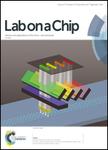版权所有:内蒙古大学图书馆 技术提供:维普资讯• 智图
内蒙古自治区呼和浩特市赛罕区大学西街235号 邮编: 010021

作者机构:NIST Ctr Nanoscale Sci & Technol Gaithersburg MD 20899 USA Univ Maryland Maryland Nanoctr College Pk MD 20742 USA
出 版 物:《LAB ON A CHIP》 (微型实验室:化学与生物学的微型化)
年 卷 期:2018年第18卷第1期
页 面:139-152页
核心收录:
学科分类:0710[理学-生物学] 07[理学] 0804[工学-仪器科学与技术] 0805[工学-材料科学与工程(可授工学、理学学位)] 0703[理学-化学]
基 金:National Institute of Standards and Technology Center for Nanoscale Science and Technology, through the University of Maryland [70NANB10H193] University of Maryland
主 题:Structure-function relationships silicon dioxide Quantitative Evaluation measurement uncertainty Hard materials vertical Ions Nanoparticles Fluidics Vertical separation Light interference focused beam rapid prototyping Ion beams
摘 要:The vertical dimensions of complex nanostructures determine the functions of diverse nanotechnologies. In this paper, we investigate the unknown limits of such structure-function relationships at subnanometer scales. We begin with a quantitative evaluation of measurement uncertainty from atomic force microscopy, which propagates through our investigation from ion beam fabrication to fluorescent particle characterization. We use a focused beam of gallium ions to subtractively pattern silicon surfaces, and silicon nitride and silicon dioxide films. Our study of material responses quantifies the atomic limits of forming complex topographies with subnanometer resolution of vertical features over a wide range of vertical and lateral dimensions. Our results demonstrate the underutilized capability of this standard system for rapid prototyping of subnanometer structures in hard materials. We directly apply this unprecedented dimensional control to fabricate nanofluidic devices for the analytical separation of colloidal nanoparticles by size exclusion. Optical microscopy of single nanoparticles within such reference materials establishes a subnanometer limit of the fluidic manipulation of particulate matter and enables critical-dimension particle tracking with subnanometer accuracy. After calibrating for optical interference within our multifunctional devices, which also enables device metrology and integrated spectroscopy, we reveal an unexpected relationship between nanoparticle size and emission intensity for common fluorescent probes. Emission intensity increases supervolumetrically with nanoparticle diameter and then decreases as nanoparticles with different diameters photobleach to similar values of terminal intensity. We propose a simple model to empirically interpret these surprising results. Our investigation enables new control and study of structure-function relationships at subnanometer scales.